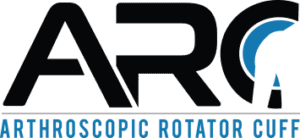DISCLAIMER: The information in this section of the shoulderstudy.com website is intended for physical therapists and other rehabilitation professionals whose patients are study participants in the ARC Shoulder Clinical Trial. It is not intended for personal use by individuals without the guidance of a qualified physical therapist.

LINKS & RESOURCES
FREQUENTLY ASKED QUESTIONS
Encourage them to do their home exercises as instructed, emphasizing the role doing so plays in both the length and success of their recovery, as you would for any patient. However, patient compliance with the home exercise program is distinct from physical therapist compliance with the treatment protocol. When completing the Physical Therapist Report Form(s) do NOT indicate that the protocol has not been followed due to patient non-compliance. The primary purpose of the Physical Therapist Report Form is to collect information about the rehabilitation program as implemented by the treating physical therapist, not the patient. Patient compliance information is collected separately by us directly from the patient.
Even if you made some modifications to the treatment protocol, you should still answer YES on the PT Report form that the prescribed PT Protocol was followed. Further on in the report you should indicate which sets of exercises, if any, weren’t performed and why. However, if you did not follow the treatment protocol at all, for example because you did not receive it prior to treatment, then you should answer NO accordingly.
You will be referred to the site lead physical therapist for a call to discuss the treatment protocol changes. If needed, you can access the appropriate non-op or post-op PT treatment protocol on the study website: shoulderstudy.org/studies/arc-trial/physical-therapists. After the patient finishes physical therapy, you will receive an additional retrospective PT report form, which you will be asked to complete regarding the crossover physical therapy treatment.
If a post-operative patient has had alternate or additional surgical procedures, you may modify the treatment protocol as appropriate based on the procedures they received. For example, if an
operative patient had a debridement only, you should follow the post-operative treatment protocol but may advance the patient through each phase as tolerated (as opposed to adhering strictly to the time-based stages). If a patient had a SLAP repair (in addition to or instead of a rotator cuff repair), the surgeon’s guidelines/restrictions should be incorporated into the treatment protocol as appropriate. If you have any questions, please contact your site lead physical therapist.
Contact your site Lead PT at any time with questions, concerns or for clarification as needed.
An email will be sent to you when it is time to complete each report. You do not need to keep track of when reports are due.
A link to the form will be emailed to you. Simply click on that link and answer the questions in the online survey. It should only take about 5 minutes to complete.
Yes. The Non-Op protocol stages do not have specified time frames. Once the goals of a stage are met, the patient may be progressed to the next phase.
If a Post-Op patient is progressing quickly, can I advance them to the exercises for the next phase?
No. The protocol was written respecting healing times. We kindly ask that you do not accelerate the post-op program for patients who have had a repair.
As long as the changes follow the above guidelines, this is not necessary. However, if a particular set of exercises has not been performed at all, this should be reported – along with the reason – in the PT Report Form that will be sent to you to complete. Feel free to contact your site lead PT if you have additional questions.
As long as the exercises fall into the same category, small changes are acceptable. It is also understood that some patients may not be able to progress as others. This is why the protocols have
a function-based progression. Also, if you have an operative patient who had a surgical procedure other than (or in addition to) a rotator cuff repair, modifications to the post-op PT protocol may be necessary. See “What if my post-operative patient has had a surgical procedure other than a rotator cuff repair….?” for more information.
Differences in exercise preference and patients’ needs and understanding are expected. As long as the exercise falls into the same category (i.e., passive range of motion flexion, active-assistive range of motion into external rotation), these substitutions are acceptable.
